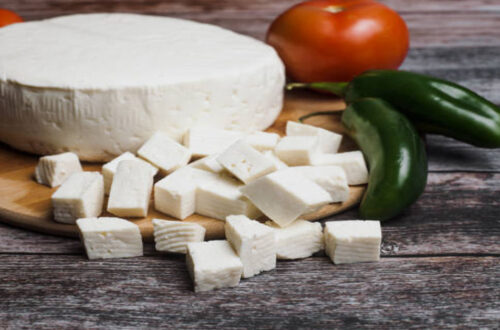Drachenfrucht, commonly known in English as Dragon Fruit, is a visually striking tropical fruit recognized for its vibrant colors, unique texture, and numerous health benefits. Native to Central America but now widely cultivated in Southeast Asia, the dragon fruit belongs to the cactus family, Cactaceae, and is often considered a superfruit due to its rich nutritional profile and antioxidant properties. Its scientific name is Hylocereus undatus (white-fleshed), Hylocereus costaricensis (red-fleshed), and Hylocereus megalanthus (yellow-skinned variant). This article explores dragon fruit’s history, varieties, nutritional composition, health benefits, culinary uses, storage tips, and potential side effects.
History and Origin of Drachenfrucht
Dragon fruit originates from Central and South America, particularly in countries like Mexico, Guatemala, and Costa Rica. The fruit became widely popular after its introduction to Southeast Asia in the 19th century, where countries such as Vietnam, Thailand, and the Philippines began cultivating it commercially. Today, Vietnam is one of the largest exporters of dragon fruit worldwide. Its dramatic appearance—spiky skin resembling dragon scales and bright, contrasting flesh—earned it the name “Dragon Fruit”, which translates to “Drachenfrucht” in German.
Historically, dragon fruit was considered a rare and exotic fruit due to the difficulty of cultivation outside tropical climates. Indigenous populations used it for medicinal purposes, including digestive health, hydration, and immune support. Today, it is celebrated globally for its aesthetic appeal, nutritional richness, and versatile culinary uses.
Types of Drachenfrucht
Dragon fruit is not a single variety; it exists in multiple types, distinguished by skin and flesh color. Here is a table summarizing the main varieties:
| Variety | Skin Color | Flesh Color | Taste Profile | Common Region |
|---|---|---|---|---|
| Hylocereus undatus | Pink/Red | White | Mildly sweet, subtle flavor | Vietnam, Thailand |
| Hylocereus costaricensis | Pink/Red | Red | Sweet, slightly tangy | Central America, Southeast Asia |
| Hylocereus megalanthus | Yellow | White | Sweet, less tangy | Colombia, Ecuador |
While all varieties contain tiny black seeds, some are more fibrous, while others are softer and juicier. Each type provides unique culinary options and subtle variations in flavor, sweetness, and texture.
Nutritional Composition
Dragon fruit is low in calories but rich in essential nutrients, antioxidants, and dietary fiber. It is especially suitable for health-conscious individuals and those seeking natural hydration and nutrient-dense foods. The following table highlights the approximate nutritional content of 100 grams of raw dragon fruit:
| Nutrient | Amount per 100g | Health Benefit |
|---|---|---|
| Calories | 50-60 kcal | Supports weight management |
| Carbohydrates | 11-13 g | Provides energy |
| Dietary Fiber | 3 g | Promotes digestion |
| Protein | 1-2 g | Supports tissue repair |
| Fat | 0.1-0.6 g | Low-fat, heart-friendly |
| Vitamin C | 3-4 mg | Boosts immunity, antioxidant |
| Calcium | 6-10 mg | Bone health |
| Iron | 0.5-1 mg | Supports red blood cells |
| Magnesium | 10-18 mg | Muscle and nerve function |
| Phosphorus | 20-25 mg | Supports energy metabolism |
| Antioxidants | Polyphenols, flavonoids, betalains | Protects cells from damage |
Dragon fruit’s high fiber and antioxidant content makes it particularly beneficial for digestion, skin health, and prevention of chronic diseases. Additionally, it is rich in prebiotic compounds, which help nourish healthy gut bacteria.
Health Benefits of Drachenfrucht
1. Rich in Antioxidants
Dragon fruit contains a combination of vitamin C, betalains, and flavonoids that neutralize free radicals in the body. These antioxidants help prevent oxidative stress, which is linked to aging, inflammation, and chronic diseases such as heart disease and cancer.
2. Supports Digestive Health
With 3 grams of dietary fiber per 100 grams, dragon fruit helps regulate bowel movements and prevent constipation. The fiber also promotes a healthy gut microbiome, improving nutrient absorption and reducing gastrointestinal disorders.
3. Boosts Immunity
Vitamin C in dragon fruit strengthens the immune system by stimulating white blood cell production and enhancing the body’s natural defense mechanisms. Regular consumption may reduce the risk of infections and support overall immunity.
4. Supports Heart Health
Dragon fruit is low in fat and contains heart-friendly nutrients like fiber, magnesium, and antioxidants. Fiber reduces cholesterol levels, while antioxidants prevent oxidative damage to blood vessels, contributing to cardiovascular health.
5. Promotes Skin Health
The high antioxidant content protects skin cells from free radical damage, reducing premature aging and wrinkles. Vitamin C aids collagen production, improving skin elasticity and hydration.
6. Blood Sugar Regulation
Some studies suggest that dragon fruit may help regulate blood sugar levels due to its fiber content and low glycemic index. It is a suitable fruit for individuals managing diabetes or aiming to maintain stable energy levels.
7. Hydration and Weight Management
With over 90% water content, dragon fruit naturally hydrates the body. Its low-calorie and high-fiber profile make it an excellent addition to a weight-loss diet, as it promotes fullness without excess calories.
Culinary Uses of Drachenfrucht
Dragon fruit is versatile in the kitchen. Its sweet and mildly tangy taste pairs well with both sweet and savory dishes. Some popular ways to enjoy it include:
- Fresh Consumption: Simply cut in half and scoop out the flesh with a spoon.
- Smoothies and Juices: Blended with other fruits like mango, pineapple, or banana.
- Salads: Adds color and flavor to fruit or vegetable salads.
- Desserts: Used in ice creams, sorbets, puddings, and parfaits.
- Culinary Garnish: Its vibrant colors enhance the aesthetic appeal of dishes.
- Fermented Beverages: Can be used in fruit wines and fermented drinks.
Dragon fruit’s seeds are edible and add a subtle crunch, similar to kiwi seeds. Its versatility in both raw and cooked preparations makes it a favorite for chefs and home cooks alike.
Storage and Handling
Proper storage is essential to maintain dragon fruit’s freshness and flavor. Here are some tips:
- Room Temperature: Store uncut dragon fruit in a cool, dry place for 2-3 days.
- Refrigeration: Cut fruit should be stored in an airtight container for up to 5 days.
- Freezing: Dragon fruit can be diced and frozen for smoothies or desserts.
Avoid exposing the fruit to direct sunlight for prolonged periods, as it can cause spoilage. Additionally, handle gently to prevent bruising the delicate skin.
Potential Side Effects
Dragon fruit is generally safe for consumption, but a few considerations are necessary:
- Allergic Reactions: Rarely, some individuals may experience mild allergies, such as itching or swelling.
- Digestive Issues: Excessive consumption may cause bloating or diarrhea due to high fiber content.
- Blood Sugar Concerns: While low in glycemic index, individuals with diabetes should monitor their intake.
Moderation is key to enjoying the fruit’s benefits without adverse effects.
Fun Facts About Drachenfrucht
- The fruit’s skin resembles dragon scales, giving it its mythical name.
- Dragon fruit flowers bloom only at night and emit a fragrant aroma, often called “moonflowers.”
- It is a pollinator-dependent fruit, meaning bats and moths play a vital role in its natural reproduction.
- The seeds are rich in omega-3 fatty acids, a rare nutrient for fruits.
Comparison With Other Superfruits
| Superfruit | Calories (per 100g) | Vitamin C (mg) | Fiber (g) | Antioxidants |
|---|---|---|---|---|
| Drachenfrucht | 50-60 | 3-4 | 3 | High (betalains, polyphenols) |
| Blueberries | 57 | 9.7 | 2.4 | High (anthocyanins) |
| Acai | 70 | 2 | 2 | Very High (anthocyanins) |
| Kiwi | 61 | 92 | 3 | High (vitamin C, polyphenols) |
Dragon fruit stands out for its hydration, fiber, and antioxidant diversity, even though some fruits like kiwi may have higher vitamin C content.
How to Select the Perfect Drachenfrucht
When choosing dragon fruit, consider these tips:
- The skin should be vibrant and free from blemishes.
- Gently press the fruit; it should yield slightly without being mushy.
- Avoid fruits with dried tips or shriveled edges.
- The flesh should be evenly colored, and the seeds should be small, black, and edible.
Conclusion
Drachenfrucht is more than a visually striking fruit—it is a powerhouse of nutrients, antioxidants, and fiber. From boosting immunity to promoting digestive health and improving skin texture, it provides a multitude of health benefits while being versatile in culinary applications. With proper storage and mindful consumption, dragon fruit can be a delicious and nutritious addition to any diet. Whether eaten raw, blended into smoothies, or incorporated into desserts, dragon fruit offers both aesthetic appeal and substantial health advantages, making it a true superfruit of the modern era.
Frequently Asked Questions (FAQs)
1. Is dragon fruit good for weight loss?
Yes, its low-calorie, high-fiber content makes it a suitable fruit for weight management.
2. Can diabetic patients eat dragon fruit?
Yes, in moderation, as it has a low glycemic index and helps regulate blood sugar.
3. How long does dragon fruit last in the fridge?
Cut fruit lasts about 4-5 days in an airtight container, while whole fruit lasts 1-2 weeks.
4. Does dragon fruit have antioxidants?
Yes, it contains vitamin C, flavonoids, and betalains, which protect cells from oxidative damage.
5. Can I eat dragon fruit seeds?
Yes, the small black seeds are edible and provide omega-3 fatty acids and fiber.






